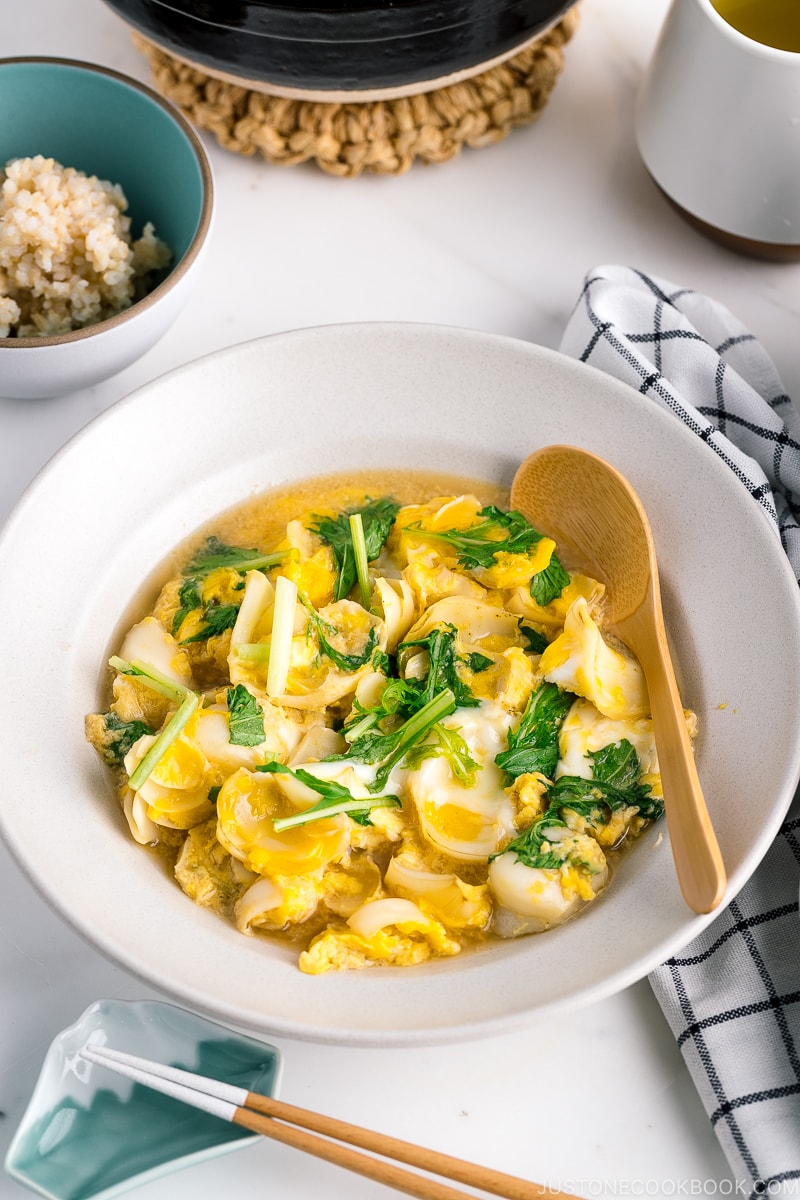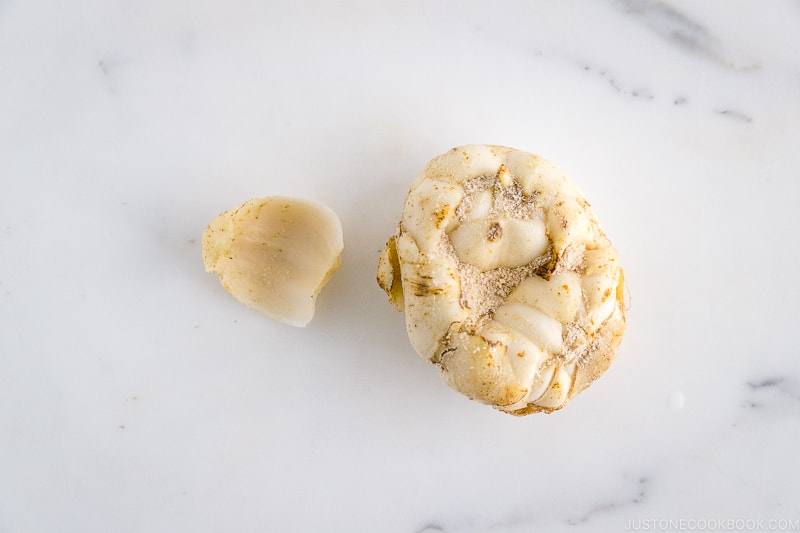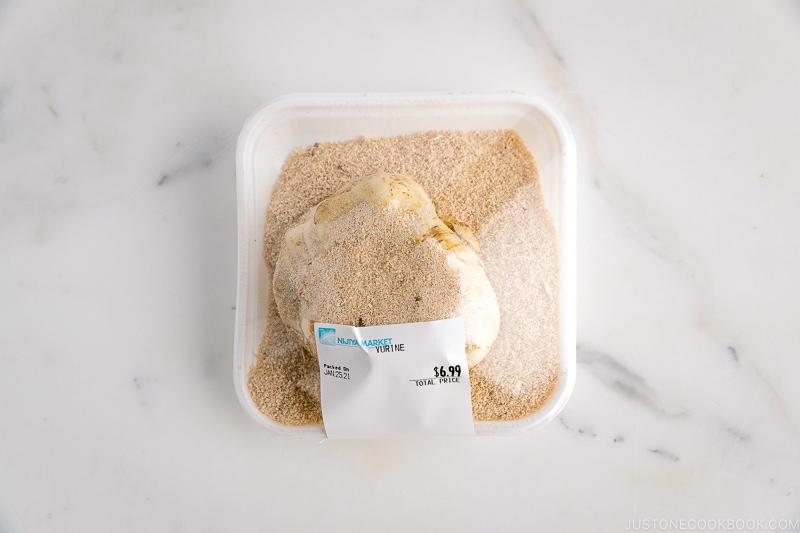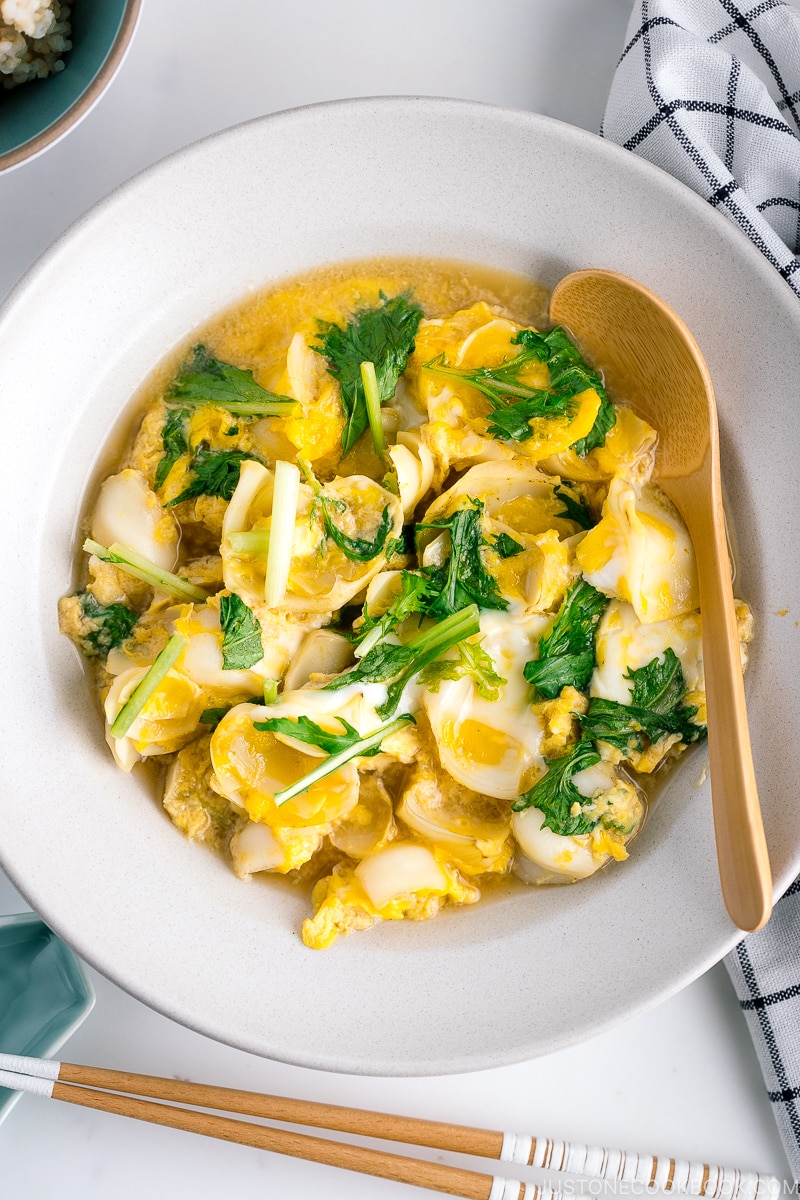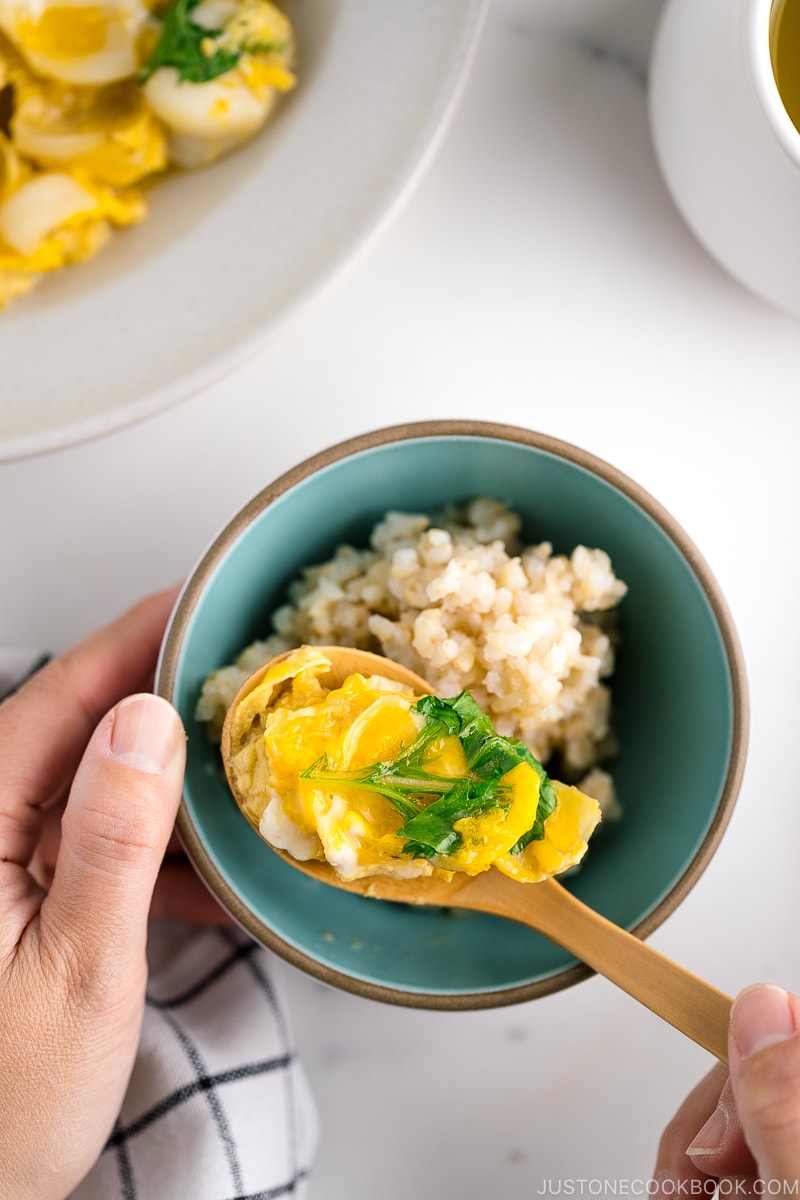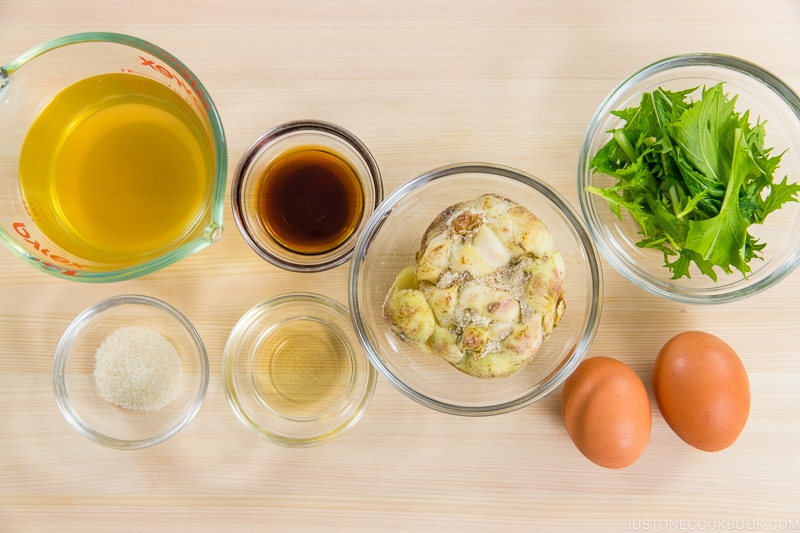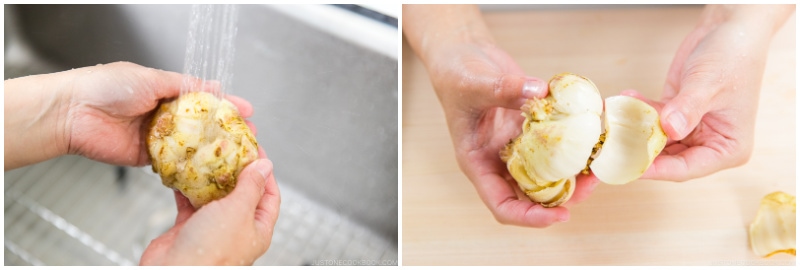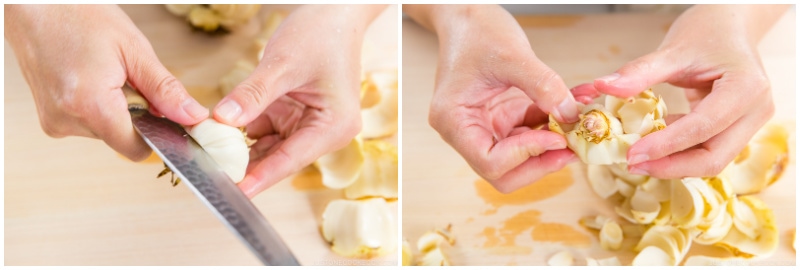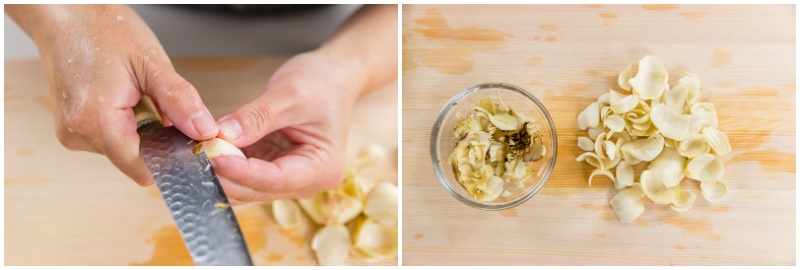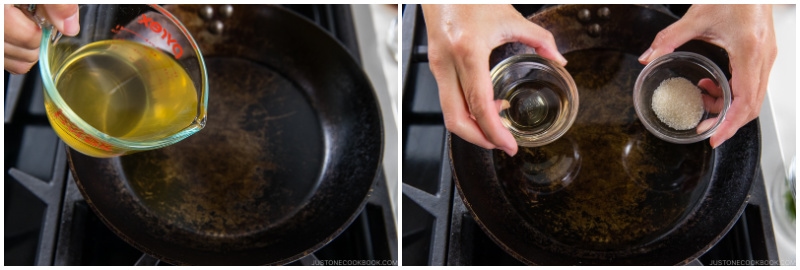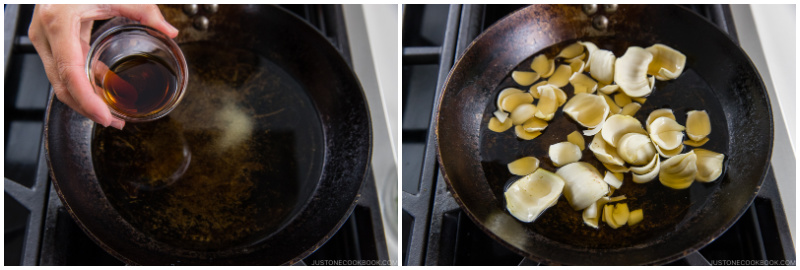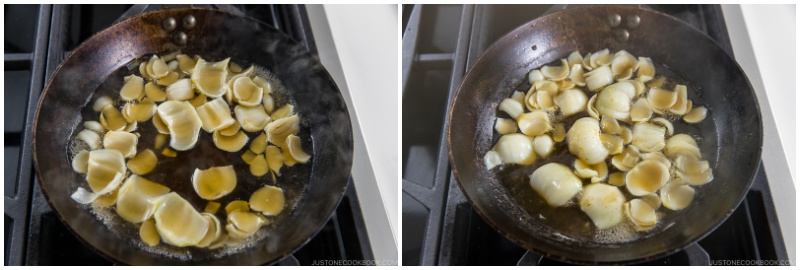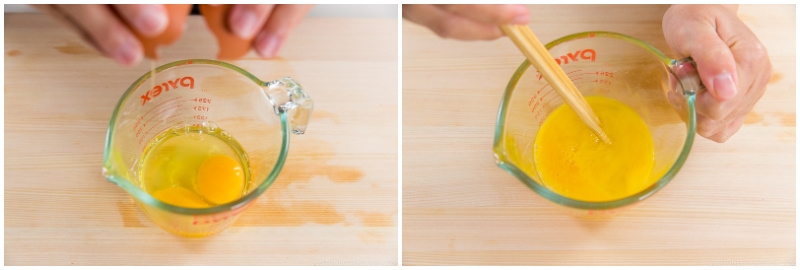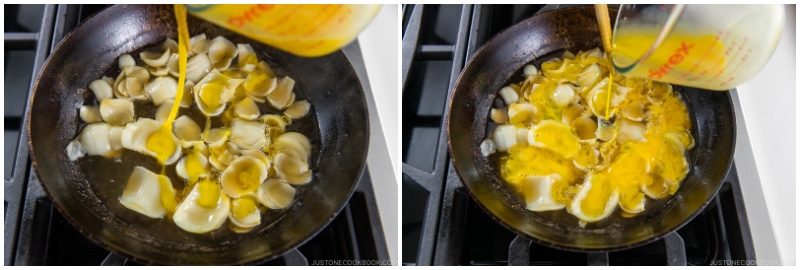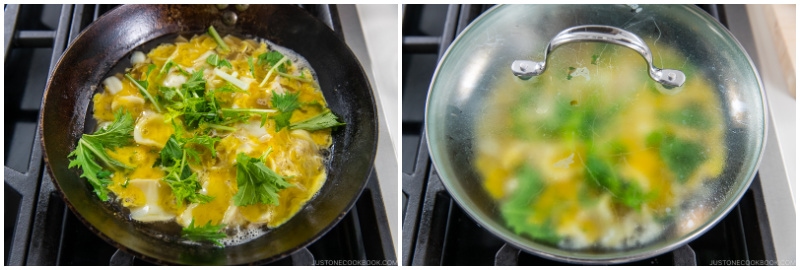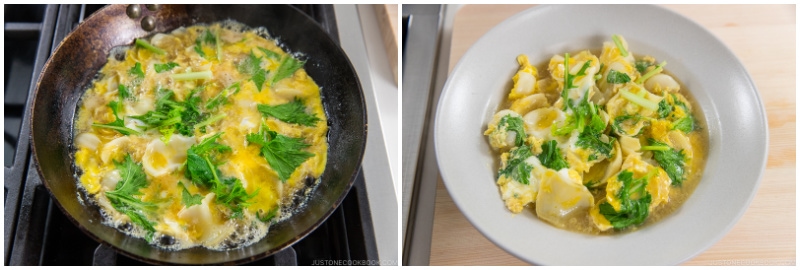A lot of Japanese home-cooked dishes are not so well-known outside of Japan. This is why I have a long list of recipes to share with you! Many of these homey foods are simple, pantry-friendly, seasonal, and quick to make—just like today’s recipe, Lily Bulb Tamagotoji (百合根の卵とじ).
What Is Tamagotoji?
The name tamagotoji comes from the Japanese words tamago (卵, たまご) for egg and toji from the verb tojiru that means to close or to seal. It’s a Japanese cooking style where you pour beaten egg into a simmered dish, effectively “closing” the top surface with the egg. The beaten egg quickly binds the ingredients and broth, which is easier to transfer over steamed rice and soba or udon noodle soup. The key is to make the egg fluffy and not overcook it. You may already know other dishes that apply this cooking method like Oyakodon, Katsudon, and Zosui (Rice Soup). Kakitamajiru (Japanese Egg Drop Soup) is not considered tamagotoji; it’s just a clear soup with fluffy egg drizzled in as an ingredient.
What Are Lily Bulbs (Yurine)?
Lily bulbs are called yurine (百合根, ゆりね) in Japanese. They are the edible bulb of the lily plant cultivated for food and medicine in Asia, especially in China, Korea, and Japan (read more about it here). You can eat it raw, stir-fried, deep-fried (like tempura), simmered, or cooked in sweets and soups.
What Do Lily Bulbs Taste Like?
Lily bulbs have tightly layered flat scales or petals connected at the stem base, similar to garlic. The raw petals are crisp and crunchy and have a mild, refreshing flavor, similar to water chestnuts. Cooked lily bulbs taste sweet with a slightly bitter aftertaste, similar to turnips and potatoes. They also have a crunchy, starchy texture.
Where to Buy Lily Bulbs
Your local Japanese grocery stores may carry it during the winter months. I bought mine from Nijiya Market. Lily bulbs are often packed in sawdust to prevent damage and drying, and can keep in the refrigerator this way for up to a month. Keep it covered until you’re ready to use; if your lily bulbs aren’t packed in sawdust, use them sooner.
Lily Bulb Substitutions
Lily bulbs might not be easy to source. Here are equally perfect ingredient suggestions for this dish. We’ll add one green veggie on top of the egg, so try to look for non-green veggies here:
Turnips Onion Potatoes Daikon Mushroom Bamboo shoot Bean sprout Tofu (medium-firm tofu or fried tofu)
Ingredients You’ll Need
Besides lily bulbs, you just need simple Japanese pantry ingredients:
lily bulbs – or turnips, potatoes, onion, mushrooms, or anything! eggs one green veggie – I used mizuna today, but you could use green peas, spinach, snow peas, or arugula dashi (Japanese soup stock) condiments – mirin, sugar, and soy sauce
How To Make Lily Bulb Tamagotoji
It’s easy to make in just 15 minutes!
Cooking Tips For Tamagotoji
Keep the ingredients simple and minimal. Besides eggs, just two ingredients are perfect. Use a frying pan instead of a pot so it’s easy to transfer to a serving dish or over steamed rice/noodle soup. Use usukuchi (light-colored) soy sauce so the broth doesn’t get too dark. If you don’t have it, you can use regular soy sauce. DO NOT overcook the egg. It is very important to keep the egg fluffy, so please carefully read my tips in the recipe instructions to avoid overcooking. Try to add the eggs when the broth is at a gentle simmer, not a hard boil.
How to Serve Tamagotoji
As I mentioned earlier, you can serve tamagotoji as a standalone dish. However, adding carbs is a fantastic way to volume up tamagotoji to make this a one-dish meal. Serve it over:
steamed rice – tamagotoji don (donburi) (卵とじ丼) soba noodle soup – tamagotoji soba (卵とじそば) udon noodle soup – tamagotoji udon (卵とじうどん)
Looking for a lighter version? Serve tamagotoji on top of the warm silken tofu or healthy grains! Wish to learn more about Japanese cooking? Sign up for our free newsletter to receive cooking tips & recipe updates! And stay in touch with me on Facebook, Pinterest, YouTube, and Instagram.

